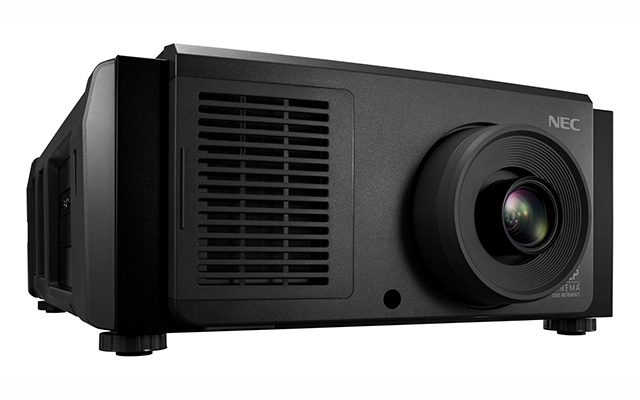Speckle? Gain? Metamerism? Demystifying the language of laser projection.
Innovation in laser projection technology revitalised the cinema industry with many advantages over traditional lamp-based systems. Enhanced image quality with brilliant colours and higher brightness levels brings exceptional visual experiences for movie-goers, whilst improved energy efficiency and vastly reduced costs associated with replacement parts means significant savings for the theatre operator.
Pioneering innovation in digital cinema technology has benefited more mainstream applications too, as Sharp/NEC’s technology advancements trickle down to enhance its range of installation laser projectors bringing movie quality visual experiences to education and corporate users.
There is nothing that Sharp/NEC’s projection guru, Gerd Kaiser, doesn’t know about laser technology and here he explains why RB laser technology is widely employed across the company’s range of digital cinema projectors.

Gerd Kaiser, senior product manager at Sharp NEC Display Solutions Europe
Download the whitepaper: Why Sharp/NEC uses RB laser light sources for Digital Cinema
From meeting rooms and lecture halls to control rooms and cinemas, laser as a light source has become the standard in the >5,000AL brightness projector category. Delivering high reliability, versatility, brightness uniformity and imaging performance, it’s clear to see why. Add to this its low energy consumption, zero maintenance and long lifecycle, laser projection is closely addressing the increasing demand for sustainable low-cost operation.
Offering the lowest cost per square metre of image compared to any other display technology, there is very little in the way of disadvantages for laser projection in mainstream applications such as education and corporate meeting rooms, but when it comes to applications demanding the absolute pinnacle of cinematic visual performance, there are some limitations to note.
What is speckle and how can it be avoided?
Laser can produce disturbing artefacts on reflective screens, commonly known as speckle. This is caused by micro-reflections of the coherent laser light on reflective surfaces. Speckle can have a disturbing impact on the viewing experience and is more visible the higher the gain (a measurement of the screen’s reflective property).
The use of low gain (less reflective) screens reduces speckle, but in turn, this requires a projector with a higher level of lumens to achieve DCI brightness, resulting in higher costs for the projector itself as well as for the increased power consumption.
A more effective way to reduce speckle is to enlarge the spectral range of the laser source. As the human eye is very sensitive to green colours, speckle is mainly visible on the green part of the image. Speckle is not perceived at all in blue and hardly at all in red colours. Therefore, enlarging the green light range has the highest impact on reducing speckle. This can be achieved by using phosphor; a blue laser diode illuminates a phosphor wheel, producing green light at wide range.

The graphs compare the light spectrum across different laser technologies

The compact, lightweight 14,000 Lumen NEC NC1503L digital cinema projector using RB laser technology, launched in 2023
The advantages of laser phosphor.
Using green in a wide range has an additional important advantage. The human eye is used to seeing colours in a wide frequency range, as it is from sunlight, or as produced by traditional Xenon lamp projectors. Colours in narrow bandwidth can be perceived as unnatural. It can even be perceived differently by different people, a phenomenon called “metamerism”, an effect also sometimes seen by colour measurement devices when installing the projector. With the use of green phosphor, cinema movies can be shown in very natural colours, the way it was intended by the movie maker.
Laser phosphor projectors are already well established in the AV industry. In 2014 NEC brought this technology to cinema with the first DCI certified laser phosphor projector, the NC1100L. In 2017, NEC launched the first DCI RB laser projector to the cinema market, the NC1700L, using red and blue laser diodes, still producing green with the help of blue laser with yellow phosphor. Adding red laser diodes allowed the development of brighter models, which now range up to 35,000 lumens.
Today, Sharp/NEC offers the widest range of laser phosphor and RB laser projectors for small arthouse cinemas up to large premium screen sizes. Users benefit from brilliant natural colours, full flexibility of screen type, high efficiency, affordable costs, and long lifetimes.
Download the white paper to understand more about the advantages of laser as a light source, allowing cinema operators to significantly reduce costs whilst delivering a superb movie-going experience. Explaining the incidence of speckle and how to avoid it, the white paper summarises the reasons why Sharp/NEC is using RB laser light sources in its range of Digital Cinema Projectors.
Learn more about Sharp/NEC’s visual solutions for cinema.
